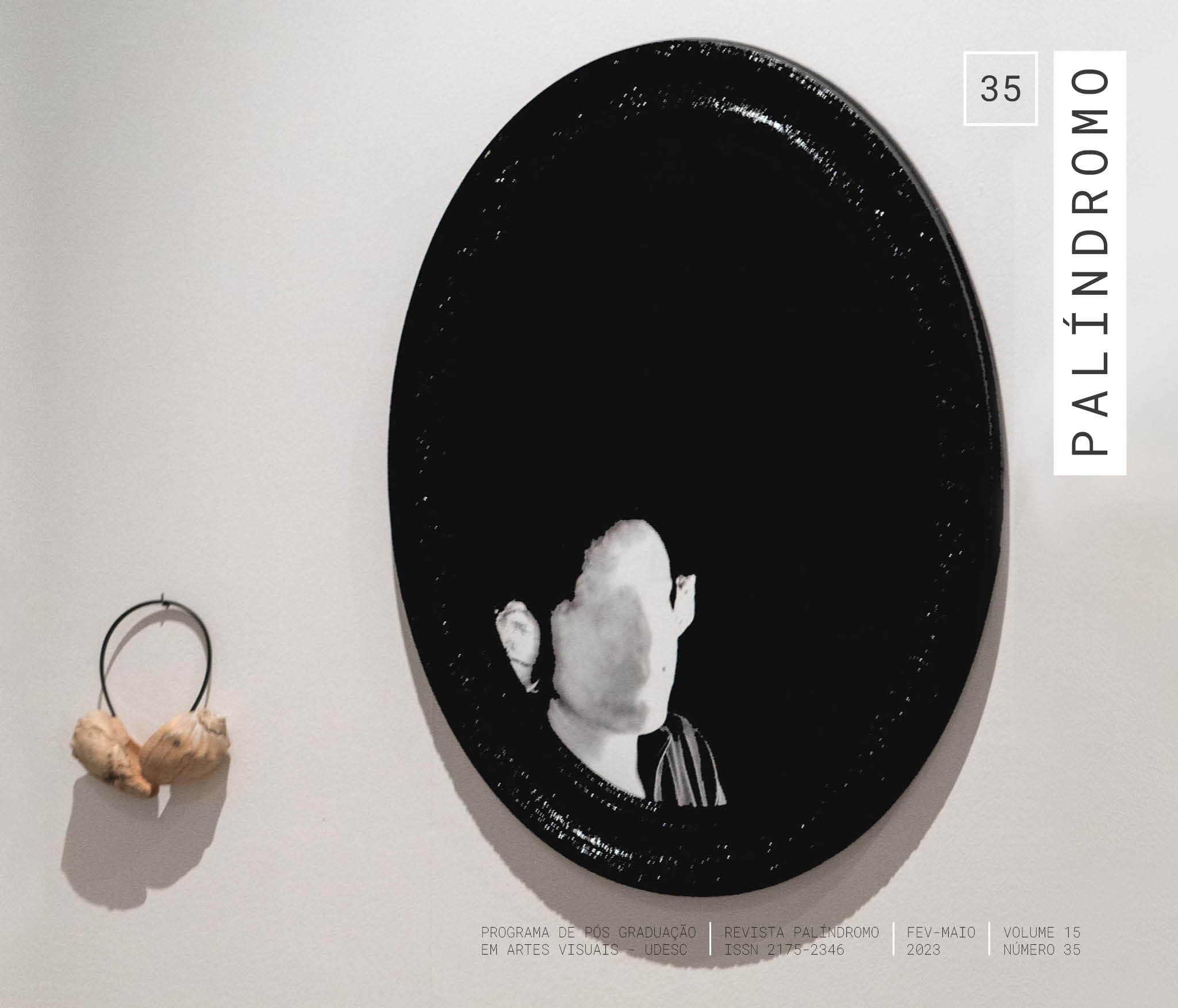Arte, educación y registro: las distintas formas de la memoria
DOI:
https://doi.org/10.5965/2175234615352023239Palabras clave:
Educación en museos, Archivos en la educación, Enseñanza del arteResumen
El artículo parte de la cuestión de cómo documentar lo que los profesionales de la enseñanza del arte planifican en/para exposiciones en museos y centros culturales, presentando reflexiones teóricas que correlacionan los conceptos de memoria, archivo y documento. El texto tiene como objetivo discutir la relación entre documento y memoria en el ámbito cultural de América Latina, señalar cómo tales vínculos conducen a diferentes formas de registro y reflexionar sobre las diferentes formas en que la memoria de nuestras prácticas educativas en el arte puede ganar, a medida que nos integramos con nuestro paisaje cultural. El escrito presenta resultados de una investigación bibliográfica y de campo (esta realizada en Lima, Perú), referenciada en lecturas de los campos del arte, la educación, la historia y la semiótica de la cultura, de autores como Artières (1998), Farge (2009 ), Lotman (1998), Pine Tree (2020), Sennet (2020), Taylor (2013) y Zumthor (1993). Entre los resultados, destacamos la comprensión de que la elección de la forma más adecuada para registrar un recuerdo está relacionada con lo que se considera recordado y que la inclusión de estas otras formas de manifestación de la memoria amplía lo que entendemos por conocimiento.
Descargas
Citas
ARGUEDAS, J. M. (trad.). Dioses y Hombres de Huarochiri. Narración quechua recogida por Francisco de Avila [1598?]. Lima, Peru: Instituto de Estudios Peruanos, 1966. Disponível em:http://www.letras.ufmg.br/padrao_cms/documentos/profs/romulo/ManuscritodeHuarochiriArguedas.pdf. Acesso em: 30 maio 2022.
ARTIÈRES, P. Arquivar a Própria Vida. Revista Estudos Históricos, Rio de Janeiro, v. 11, n. 21, p. 9-34, 1998. Disponível em: http://bibliotecadigital.fgv.br/ojs/index.php/reh/article/view/2061/1200. Acesso em: 21 nov. 2019.
CAMARGO, A. M.; GOULART, S. Centros de Memória: uma proposta de definição. São Paulo: Edições Sesc São Paulo, 2015. Coleção Sesc Culturas.
CASTRO, A. C. V. Lima narrada: entre arquitetos e literatos. In: URQUIDI, V. et al. (org.). Atores, fazeres e políticas culturais na América Latina: comunicação e cultura. São Paulo: Prolam/USP, 2019. p. 629-645. Livro IV. Coleção Pensar a América Latina e o Caribe.
CASTRO, F. S. R. de. Construindo o Campo da Educação Museal: um passeio pelas políticas públicas de museus no Brasil e em Portugal. 275 f. 2018. Tese (Doutorado em Educação) -- Faculdade de Educação da Universidade Federal Fluminense, Niterói, 2018. Disponível em: https://www.academia.edu/40078885/CONSTRUINDO_O_CAMPO_DA_EDUCA%C3%87%C3%83O_MUSEAL_um_passeio_pelas_pol%C3%ADticas_p%C3%BAblicas_de_museus_no_Brasil_e_em_Portugal Acesso em: 3 maio 2022.
FARGE, A. O Sabor do Arquivo. São Paulo: Edusp, 2009.
FERREIRA, J. P. Cultura é Memória. In: FERREIRA, Jerusa Pires. Armadilhas da Memória e Outros Ensaios. Cotia: Ateliê Editorial, 2003. p. 69-87.
JARDIM, J. M. Sabores e Saberes dos Arquivos. PontodeAcesso, Salvador, v. 5, n. 1, p. 109-111, abr. 2011. Disponível em: https://brapci.inf.br/index.php/res/download/98641 Acesso em: 27 nov. 2022. DOI: https://doi.org/10.9771/1981-6766rpa.v5i1.5078
KHITROVA, D. Introduction. In: Permanent Evolution: selected essays of literature, theory and film – Yuri Tynianov. Translated and Edited by Ainsley Morse and Philip Redko. Academic Studies Press: Boston, 2019. p. 1-24. DOI: https://doi.org/10.2307/j.ctv1zjg7wx.5
LOTMAN, I. La memoria de la cultura. In: LOTMAN, I. La Semiosfera II: semiótica de la cultura, del texto, de la conducta y del espacio. Madrid: Ediciones Cátedra, 1998. p. 108-115.
LOURENÇO, M. C. F. Museus Acolhem Moderno. São Paulo: Edusp, 1999.
MARTÍN-BARBERO, J. A Comunicação na Educação. Tradução de Maria Immacolata Vassallo de Lopes e Dafne Melo. São Paulo: Contexto, 2014.
MERRELL, F. Viver Aprendendo: cruzando fronteiras dos conhecimentos com Paulo Freire e Charles S. Peirce. Ijuí: Ed. Unijuí, 2008.
MUSEO DE ARTE DE LIMA. Exposicion Permanente. Sala 4 – Textiles Precolombinos. Lima, Peru. 2022a.
MUSEO LARCO. Exposicion Permanente. Quipus Inca. Sala 5, Vitrina 58. 2022b. Lima, Peru. Disponível em: https://www.museolarco.org/exposicion/exposicion-permanente/exposicion-en-linea/tejidos-del-antiguo-peru/quipus-inca/. Acesso em: 30 maio 2022.
PINHEIRO, A. A Condição Mestiça. Pasquinagem, n. 10, p. 8-23, São Paulo, set. 2020. Disponível em: https://revistapasquinagem.com/wp-content/uploads/2020/11/pasquinagem-10-1.pdf. Acesso em: 7 nov. 2022.
SENNETT, R. O Artífice. Tradução de Clóvis Marques. 9.ª ed. Rio de Janeiro: Record, 2020.
TAYLOR, D. O Arquivo e o Repertório: performance e memória cultural nas Américas. Belo Horizonte: Editora UFMG, 2013.
ZUMTHOR, P. A Letra e a Voz: a “literatura” medieval. São Paulo: Companhia das Letras, 1993.
Descargas
Publicado
Cómo citar
Número
Sección
Licencia
Derechos de autor 2023 Ariane Alfonso Azambuja de Oliveira Salgado

Esta obra está bajo una licencia internacional Creative Commons Atribución 4.0.
DECLARAÇÃO DE DIREITOS AUTORAIS
a. Os artigos publicados pela revista são de uso gratuito, destinados a aplicações acadêmicas e não comerciais. Todos os direitos autorais são atribuídos à revista. Os artigos cujos autores são identificados representam a expressão do ponto de vista de seus autores e não a posição oficial da Revista Palíndromo. O (s) autor (es) compromete-se sempre que publicar material referente ao artigo publicado no Palíndromo mencionar esta publicação da seguinte forma:
Este artigo foi publicado originalmente pela revista Palíndromo em seu volume (coloque o volume), número (coloque o número) no ano de (coloque o ano) e pode ser acessado em: http://www.revistas.udesc.br/index.php/palindromo
b. Plágio, em todas as suas formas, constitui um comportamento antiético de publicação e é inaceitável. A revista Palíndromo utiliza o software iThenticate de controle de similaridade


